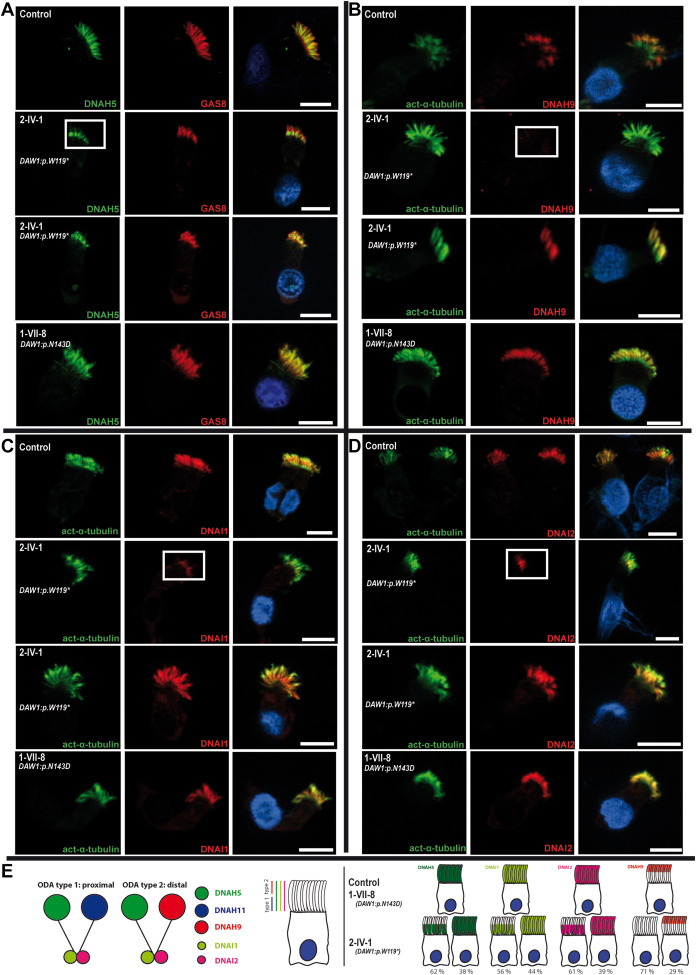Fig. 3
Figure 3. DAW1 loss-of-function variants cause a variable partial defect in the assembly of the outer dynein arm components DNAH5, DNAH9, DNAI1, and DNAI2 to the ciliary axonemes. A-D. Respiratory epithelial cells derived from the affected Palestinian child (2-IV-1) homozygous for DAW1 NM_178821.2: c.357G>A; p.(Trp119∗), a Mennonite individual (1-VII-8) homozygous for DAW1 variant NM_178821.2:c.427A>G; p.(Asn143Asp) and an unrelated control. Cells were double-labeled with antibodies directed against DNAH5 (green, A), GAS8 (red, A), DNAH9 (red, B), DNAI1 (red, C), DNAI2 (red, D), and acetylated alpha-tubulin (green, B, C, and D). Nuclei were stained using Hoechst 33342 (blue). In an unaffected control and affected individual 1-VII-8, DNAH5, DNAI1, and DNAI2 localized to the whole axonemal length and DNAH9 localized to the distal compartment of the axonemes. However, in affected individual 2-IV-1, DNAH5, DNAI1, and DNAI2 only localized to the proximal part of the ciliary axonemes in a proportion of the analyzed cells; 62%, 56%, and 61%, respectively, and DNAH9 was absent in 71% of the cells (white box), indicating that recessive loss-of-function variants in DAW1 variably affect the distal localization of ODA proteins. Scale bars: 10 μm. E. (Left side) Schematic showing the 2 types of ODAs in human: ODA type 1 localized to the proximal part of the cilia and contains DNAH5 and DNAH11 and ODA type 2 localized to the distal part of the cilia and contains DNAH5 and DNAH9. Both types contain the intermediate chains DNAI1 and DNAI2. (Right side) Schematic highlights the distal loss of DNAH5, DNAI1, DNAI2, and DNAH9 from the ciliary axonemes of affected individual 2-IV:1 with the corresponding percentages. ODA, outer dynein arm.

